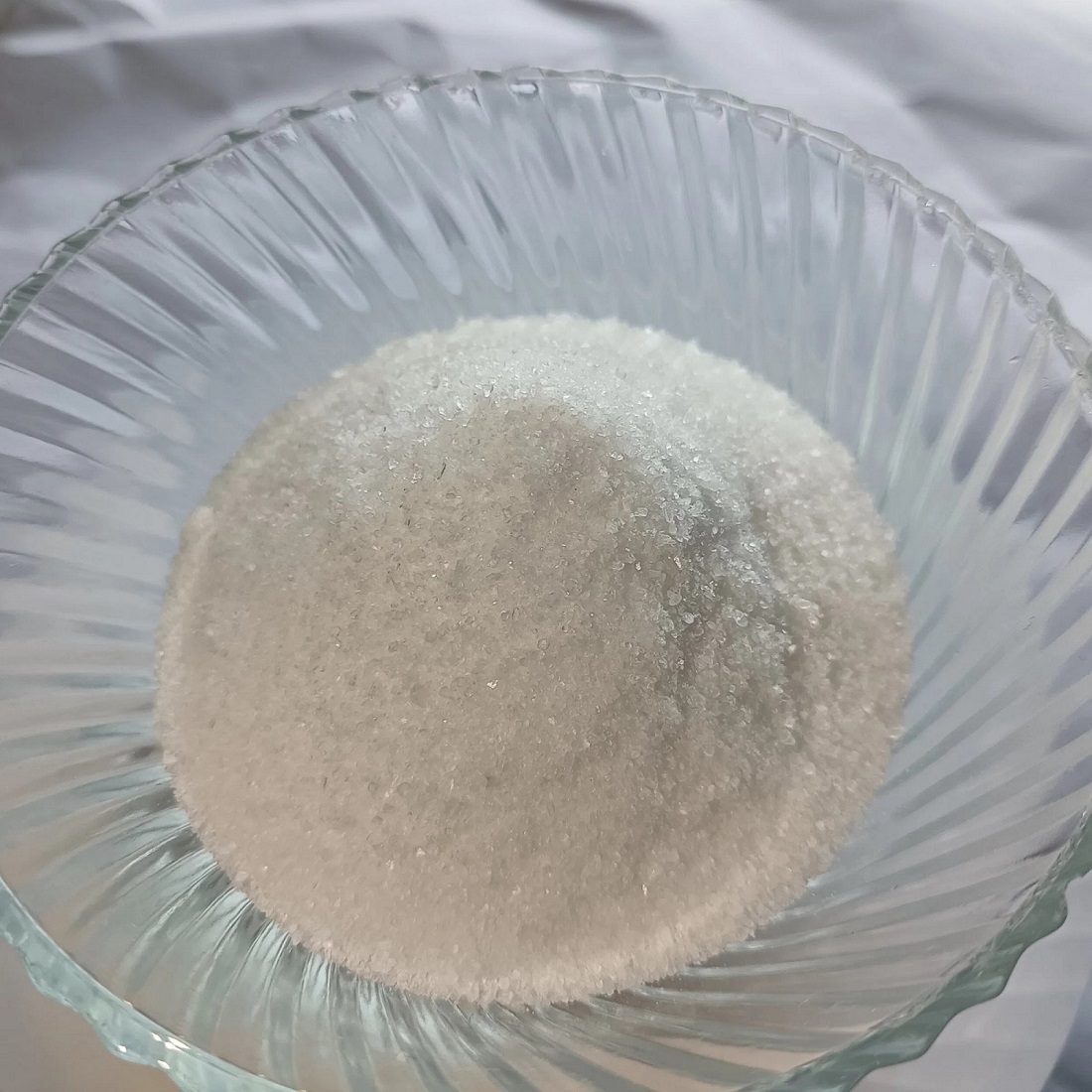Product Description
Sulfanilamide CAS 63-74-1
-
63-74-1
-
-
Entrepreneur
-
White powder to crystal
-
99% Min

Product Name: Sulfanilamide
Cas No.: 63-74-1
Molecular Formula: C6H8N2O2S
Molecular Weight: 172.20
Appearance: White powder to crystal
Density: 1.08
Purity: 99% Min
Solubility: Soluble in acetone, glycerin, hydrochloric acid, boiling water and caustic solution, slightly soluble in water, almost insoluble in chloroform, ether, petroleum ether and benzene.
Boiling point: 401 ℃
Melting point: 164-167 ℃
Flash point: 196 ℃
Vapour: 0.0±0.9 mmHg at 25°C
Refractive index: 1.6490 (estimate)v
SMILES: S(N)(=O)(=O)C1=CC=C(N)C=C1
InChI Key: InChIKey=FDDDEECHVMSUSB-UHFFFAOYSA-N
Other Names: Sulphanilamide / 4-Aminobenzenesulfonamide / p-Aminobenzenesulfonamide
Description:
Sulfanilamide, also known as Sulphanilamide, 4-Aminobenzenesulfonamide or p-Aminobenzenesulfonamide, is a chemical compound that serves as an intermediate in the synthesis of various pharmaceutical compounds. As an intermediate, sulfanilamide plays a crucial role in the production of drugs belonging to the sulfonamide class.
Sulfanilamide itself has antimicrobial properties and was one of the first synthetic antibiotics to be used in the treatment of bacterial infections. However, its primary use today is as a starting material or building block for the synthesis of other drugs.
The chemical structure of sulfanilamide contains a sulfonamide group (-SO2NH2) attached to a benzene ring. This functional group is important for its antimicrobial activity and serves as a key component in the synthesis of sulfonamide antibiotics.
Through chemical modifications and reactions, sulfanilamide can be transformed into a variety of derivatives with enhanced pharmacological properties. These derivatives can exhibit antimicrobial, antifungal, diuretic, anticonvulsant, or analgesic activities, depending on the specific modifications made.
As an intermediate, sulfanilamide is used in multi-step synthesis processes, where it undergoes various chemical transformations to create more complex drug molecules. It acts as a starting point for introducing additional functional groups or modifying the chemical structure to improve the desired therapeutic properties of the final drug product.
Overall, sulfanilamide as an intermediate plays a vital role in the pharmaceutical industry, enabling the synthesis of a diverse range of drugs that are used to treat bacterial infections, fungal infections, epilepsy, pain, and other medical conditions.
Features:
1. Versatility: Sulfanilamide can be readily modified and transformed into various derivatives through chemical reactions. This versatility allows for the production of a wide range of pharmaceutical compounds with diverse therapeutic properties.
2. Building Block: Sulfanilamide serves as a fundamental building block in the synthesis of sulfonamide drugs. It provides a core structure upon which additional functional groups can be added or modified to create new drug molecules.
3. Chemical Reactivity: Sulfanilamide exhibits desirable chemical reactivity, making it amenable to various synthetic transformations. It can undergo reactions such as acylation, alkylation, condensation, and substitution, enabling the introduction of different substituents and modifications to its chemical structure.
4. Antimicrobial Properties: Sulfanilamide itself possesses antimicrobial properties, which were historically utilized for its antibiotic activity. While its primary use has shifted to that of an intermediate, the inherent antimicrobial activity can still be relevant in certain drug syntheses or applications.
5. Well-Studied: Sulfanilamide has a long history of use in the pharmaceutical industry, and its properties as an intermediate are well-documented. Its synthesis, reactions, and modifications have been extensively studied and optimized, ensuring reliable production processes.
6. Regulatory Approval: Sulfanilamide and its derivatives have been widely used in the development of approved pharmaceutical drugs. The regulatory bodies have evaluated and approved the safety and efficacy of many sulfanilamide-based drugs, facilitating their inclusion in medical treatments.
These features make sulfanilamide a valuable intermediate in pharmaceutical synthesis, providing a foundation for the creation of various drugs with distinct therapeutic properties. Its versatility, reactivity, and well-established history contribute to its importance in the production of pharmaceutical compounds.
Applications:
1. Sulfonamide Antibiotics
Sulfanilamide and its derivatives have been used in the production of sulfonamide antibiotics, such as sulfadiazine, sulfamethoxazole, and sulfisoxazole. These antibiotics are used to treat various bacterial infections.
2. Antifungal Agents
Sulfanilamide derivatives have been employed in the synthesis of antifungal agents, such as clotrimazole and miconazole. These medications are used to treat fungal infections.
3. Diuretics
Sulfanilamide derivatives have been utilized in the synthesis of certain diuretic drugs, such as acetazolamide. Diuretics increase urine production and are used to treat conditions like edema and high blood pressure.
4. Anticonvulsants
Sulfanilamide-based compounds have been used in the development of anticonvulsant medications, such as ethosuximide. These drugs are prescribed to manage and prevent seizures in individuals with epilepsy.
5. Analgesics
Sulfanilamide derivatives have been employed in the synthesis of analgesic drugs, such as acetaminophen (paracetamol). These medications are commonly used to relieve pain and reduce fever.
Storage: Store in a cool, ventilated, and dry place. Protect from heat, sunlight, and moisture. Handle and store according to general chemical regulations.
Package: 50kg/bag or as per your particular request.